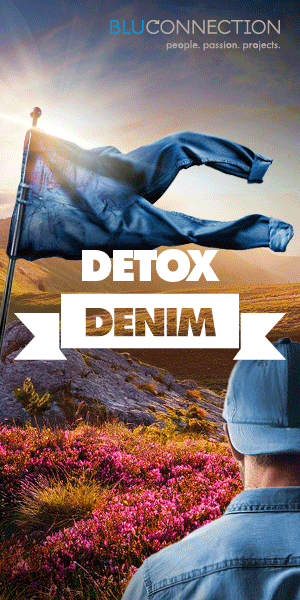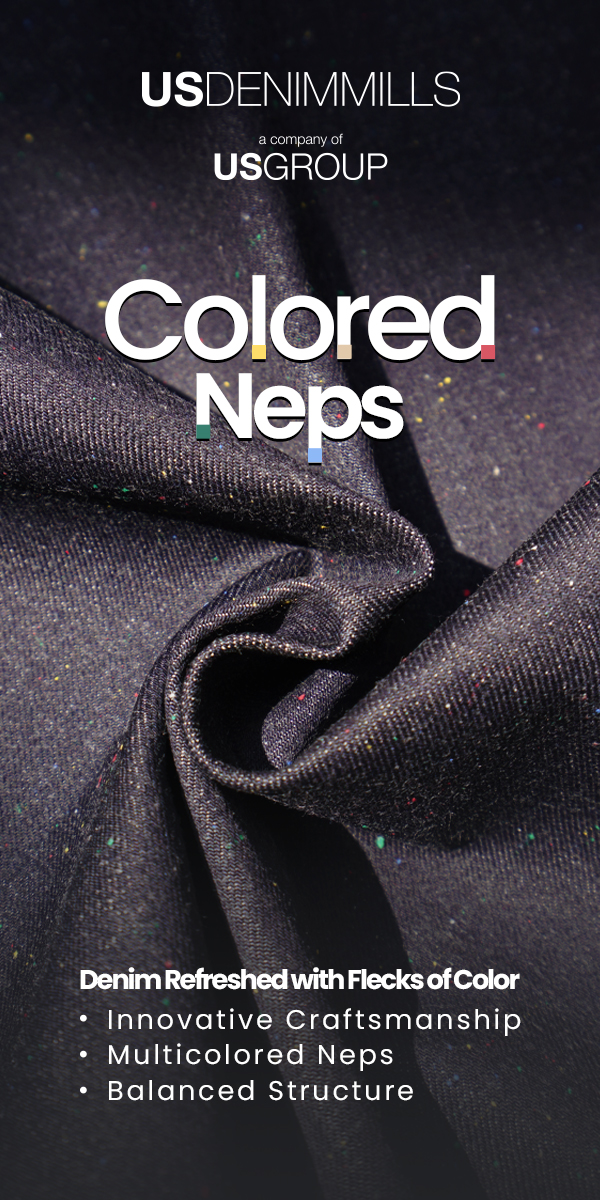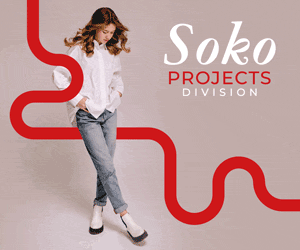Antibacterials up the ante

The covid-19 pandemic has makers of antimicrobial additives racing to find solutions that will keep face coverings and clothes virus-free. Few laboratories are certified to conduct the required tests, whilst the unprecedented situation is also testing the marketing claims of suppliers and brands.
To be clear from the start, none of the new finishes seeking to reduce viral activity can kill or cure covid-19. Covid-19 is the disease, not its agent, which is the novel coronavirus known as SARS-CoV-2. In the US a product cannot even profess to be ‘antiviral’, and the wording favoured in the EU is ‘viral-reducing’. This is the narrow framework within which companies need to navigate as they seek to respond to the demand for products offering consumers reassurance in these uncertain times.
Information on how long a virus remains active on a fabric is hard to come by, as textiles are regarded as a possible source of cross- contamination. A report by the US National Institutes of Health published in March 2020 found that the presence of SARS-CoV-2 was detectable on cardboard for up to 24 hours. Some believe that a textile surface behaves more like cardboard than plastic or stainless-steel, on which the novel coronavirus has been found to last two to three days.
Clearing the confusion
The company is now working on creating an improved version, ViralOff+, capable of withstanding 30 washes. Mr Georgson takes care to note that any viral-reducing topical finish will require gentle laundering, and he says the company will not market it until it is 100% sure of its efficacy. “The situation is grim enough; it calls for level-headedness. A company’s values are tested in these times,” he says. Current claims often rely on tests that are not antiviral, but antibacterial, says Daniel Röme, Polygiene’s chief technology officer. “Whilst some applications can be washed gently, handwashed, or last a few tougher machine washes, very few clearly claim they can achieve the rigours of proper antiviral testing after 20 or 30 washes.”
Swiss chemicals company HeiQ was also quick to bring to market a viral-reducing finish, in this case one that combines a silver-based antimicrobial with a vesicle technology to destroy enveloped viruses, including coronaviruses. Tests conducted by the Peter Doherty Institute for Infection and Immunity in Melbourne, Australia, found that a fabric sample treated with HeiQ’s Viroblock NPJ03 finish had no “infective viruses” left after 30 minutes. The result indicated a SARS-CoV-2 virus reduction of 99.99% relative to the inoculum control, the company said in a statement. Documents do not specify if the test is ISO 18184, which gives results after a two-hour timespan. HeiQ specifies that its finish will remain effective for 30 gentle washes at 60°C.
Rudolf, a German chemicals company, also promptly took action and tested its silver-based antimicrobial finish for efficiancy on viruses. “The Ruco-Bac AGP finish has been found to achieve a 97% reduction in viral activity in 60 minutes using the ISO 18184 test on the feline coronavirus,” Alberto de Conti, head of Rudolf Group’s fashion division, tells WSA. Company documents mention that the finish achieves a 97.77% reduction in viral activity in 60 minutes, and 96.61% in two hours on a 100% polyester sample.
The technology developed by Rudolf relies on a porous microstructure that Mr de Conti says “hooks” onto a fabric’s fibres. “Its high surface area, 1 gramme having a superficial area of some 60 square-metres, means a company can use very little, limiting cost and resources,” he says.
Swiss antimicrobial specialist Sanitized has tested its finishes with the ISO 18184 protocol finding that two of its references, Sanitized T 99-19, a patented ammonium silicate compound, and the silver-based Sanitized T 11-15 both reduce the viral load on polyester textiles by up to 99%.
The switch from anti-odour to antiviral
Many suppliers of odour-control and antimicrobial fabric finishes are in the process of testing their products to determine whether they can also have an antiviral activity. Few laboratories are certified to handle viruses, and the waiting list is undoubtedly long.
US-based Noble Biomaterials is looking to respond to the new need for viral-reducing properties. “Covid-19 is a top priority, and we have been working on developing more powerful solutions for the past ten to 12 years to address hospital-acquired diseases including a number of strains within the coronavirus family,” says CEO, Jeff Keane.
In 2020, the company launched a new brand platform, Ionic+, a term chosen to evoke the ‘ionic’ activity of its silver-based technologies. The move also marks the company’s expanded range. In addition to its original metallicised yarn, Noble Biomaterials now offers extrusion applications. “These allow more design freedom, including dyeability, and the possibility of adding other ingredients,” says Mr Keane. This year, the company introduced its first topical antibacterial solution. “This opens up access to other yarns and, when it makes sense, to applying the finish during a dyeing process,” he says.Colour and specialty chemicals company Archroma, based in Switzerland, commercialises Sanitized products along with its many textile auxiliaries. “This allows us to offer a wide array of technologies, including zinc, silane-quats, silver and non-biocide solutions depending on customer needs,” says Thomas Seeger, global business development manager. Virucidal technologies are similar to bactericidal ones, he says, noting that the silver and the silane-quat formula have antiviral properties. But these can be reinforced, on masks for instance, by applying a water-repellent finish on the outer fabric, an antiviral treatment on the middle layer and leaving the inside layer without any chemical treatment to avoid any risk of irritation, he says.
Archroma is currently offering an alternative antibacterial finish derived from a peppermint active. “Brands and consumers appreciate the fact that the ingredient is natural,” says Paul Cowell, head of the company’s textiles competence centres and brand studio.
Botanical solutions
Peppermint oil is the active ingredient that Life Materials, a company based in Hong Kong with operations in Thailand and North Carolina, has chosen. “We saw a need for an alternative to silver,” says company director Christian Eidem. It is investigating other essential oils and will soon introduce an antiviral solution. It is, above all, clearly against the use of silver in topical finishes, citing a report that the Swedish Chemicals Agency KEMI published in 2015 that found silver to leach into waterways. “In five years’ time you will see no more silver in textiles,” he says. Columbia Sportswear and The North Face have adopted the company’s mint-based antibacterial finish. Mr Eidem believes that consumer attitudes are changing, and outdoor enthusiasts are increasingly concerned about sustainability.
Belgian chemicals company Devan has come to specialise in ‘greener’ bio-sourced solutions, and does not offer any silver-based antimicrobial. Bi-ome, its flagship product, has been on the market for some 20 years, and uses an EPA and BPR-approved quaternary silane technology. It has been tested for different types of enveloped viruses, amongst them corona-type viruses achieving a level of deactivation of +99% in two hours, and +98% after washing, says Dr Vanessa Daelman, manager of Devan’s performance division. Depending on dosage, it can withstand 50 to 100 washes at 70°C, and it is both biodegradable and recyclable, she says. “The finish will biodegrade on a natural fibre and a Bi-ome-treated polyester yarn can be recycled into a new polyester yarn as it does not have any metallic component that could impact recycling,” she says.
For brands looking for novel natural antimicrobial solutions, Devan has opted not for peppermint but for linseed oil, which can be sourced locally as Belgium is a producer of linen. “Flax is one of the few plants that requires little to no pesticides as it has its own defence mechanism,” says Dr Daelman. The active ingredient is REACh-compliant and BPR-listed, and EPA registration is ongoing.
Other alternatives to silver
New players in the field of antimicrobial and antiviral finishes are tapping the power of zinc and copper to combat odour, bacteria and viruses. Based in Houston, Texas, Ascend Performance Materials specialises in polyamide 6.6 and was preparing to launch Acteev, a patented zinc-based solution, when covid-19 swept through the world. Independent laboratory testing has found Acteev materials to achieve greater than 99% efficacy at deactivating SARS-CoV-2 and other pathogens including H1N1, betacoronavirus OC43, human coronavirus 229E and Gram-positive and Gram-negative bacteria such as staphylococcus and E. coli, using the ISO 18184 test, the company says. “We obtained very good results, in the log 3 and log 4 range,” Harrie Schoots, senior business development leader tells WSA. Log, he says, refers to the number of 9s in test results, log 4 meaning a 99.99% reduction. As the additive is integrated into a polyamide fibre, Acteev materials present higher wash-fastness compared to textiles with topical finishes, he says.
Ascend believes zinc is a better natural ingredient than silver. Like silver, zinc emits ions that break down the membrane of common bacteria (staph and e.coli) and crowned viruses. But unlike silver, zinc is an essential mineral for human health and is generally regarded as safe by the US Food and Drugs Administration, the company asserts. “It is a building block of human tissue whereas silver is not naturally present in the body,” says Mr Schoots. “Also, because of how we incorporate zinc into the polymer, it negates the need for applying topical antimicrobial treatments, reducing the amount of water typically needed for antimicrobial applications. Our solution saves energy and produces no effluent. A polyamide fibre will also release fewer microfibres than polyester. This is the ‘green’ story of the future.”
Promethean Particles, based in the UK, specialises in copper nanoparticles for technical applications and is now expanding into textiles. The company intends to embed nano-copper in synthetic fibres, starting with polyamide. “By using nano-copper, as opposed to larger copper particles, a smaller mass of active material is required to achieve the same antimicrobial effect bringing cost and process benefits to the manufacturer,” says technical manager Dr Selina Ambrose. Formal testing has yet to be conducted with regards to viruses, but the company believes that integrating its additive into a polymer will reduce risks and improve efficiency.
New territory
Whatever technology a sportswear company chooses to use, the situation created by the pandemic is unprecedented. “We are at the beginning of the journey for soft surfaces,” says Jeff Keane at Noble Biomaterials. “In the past 15 years, much progress has been made in bactericides; it will take time before we find the best solution for the coronavirus.”
The impact of covid-19 on consumer attitudes will undoubtedly shape the future market for antimicrobial and antiviral finishes. “No ad campaign could have achieved this level of education in such a short timeframe,” points out Paul Cowell at Archroma. “Viral-reducing properties may not be embraced by all, but some consumers will be more sensitive to the issue,” he says. Keeping clothes free of viral contamination and cross-contamination is, as Polygiene CEO Ulrike Björk stated at the launch of ViralOff, “a gamechanger for the entire textile and fashion industry.”
ISO Standards
The only existing tests for coronavirus-reducing properties on textiles and plastics are those of the International Organization for Standardization (ISO), based in Geneva, Switzerland. In addition to the special measures needed to manipulate viruses, the organisation points out that, due to the individual sensitivities, the results of one test virus might not be applicable to other viruses.
- ISO 18184 provides testing methods against specific viruses on textiles. The 2014 version was updated in 2019.
- ISO 22196 applies to the measurement of antiviral activity on plastics and other non-porous surfaces.
Picture credit: KARPOS













